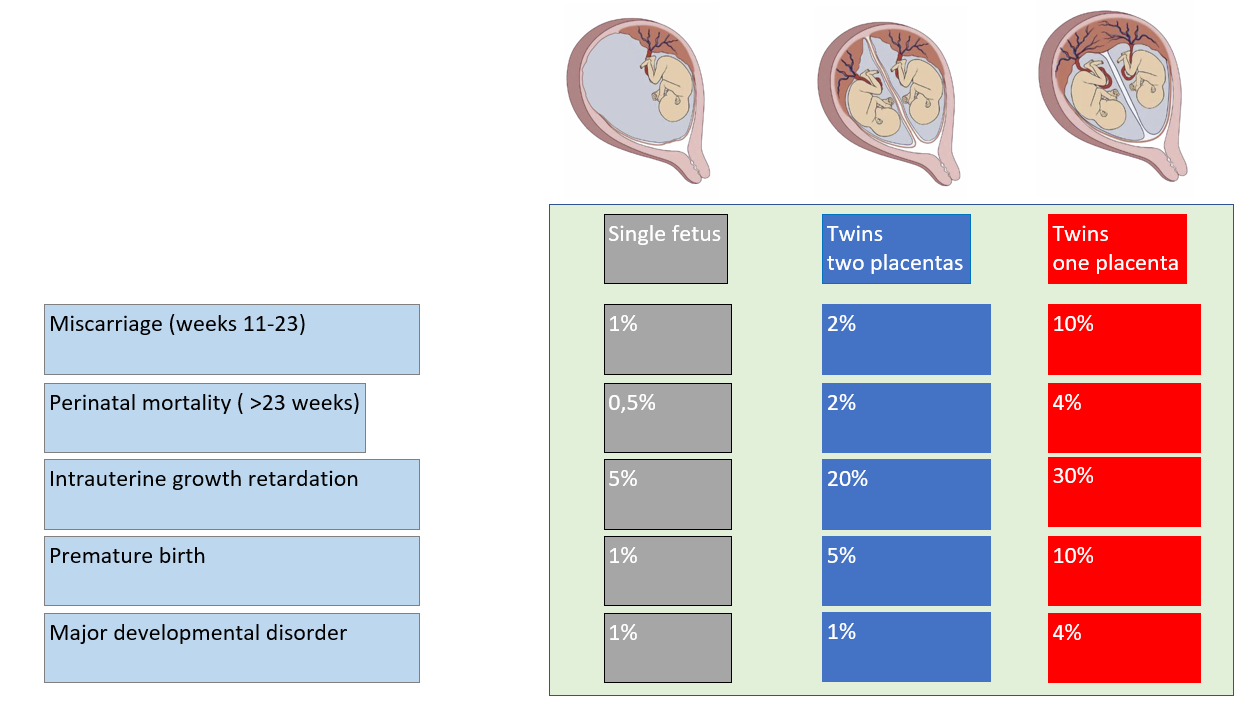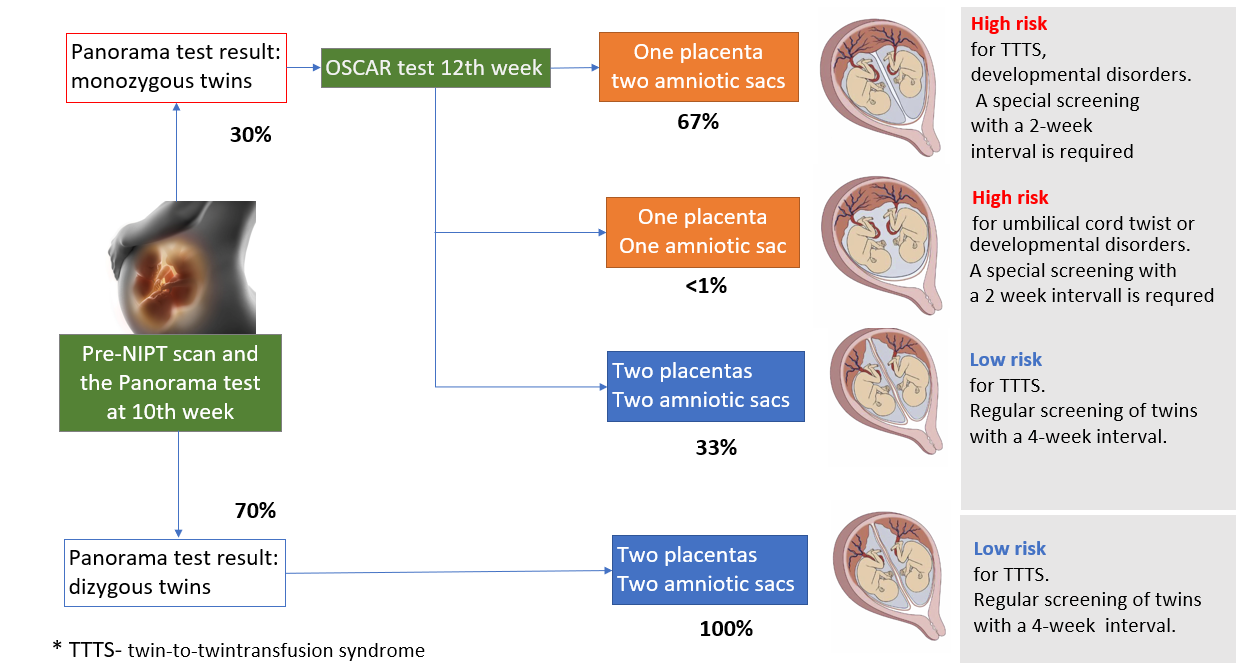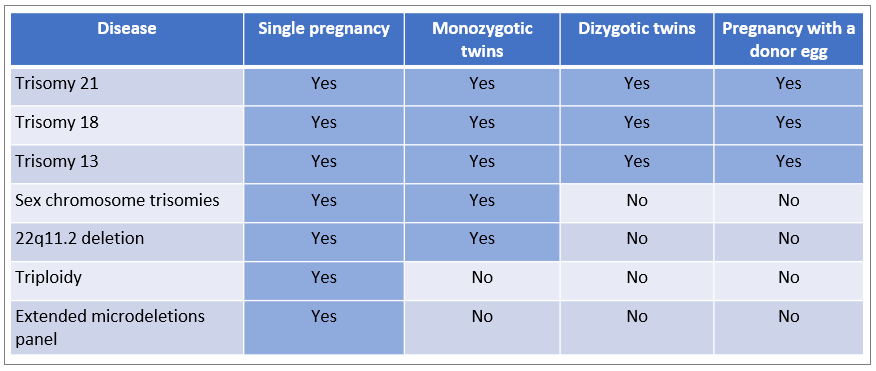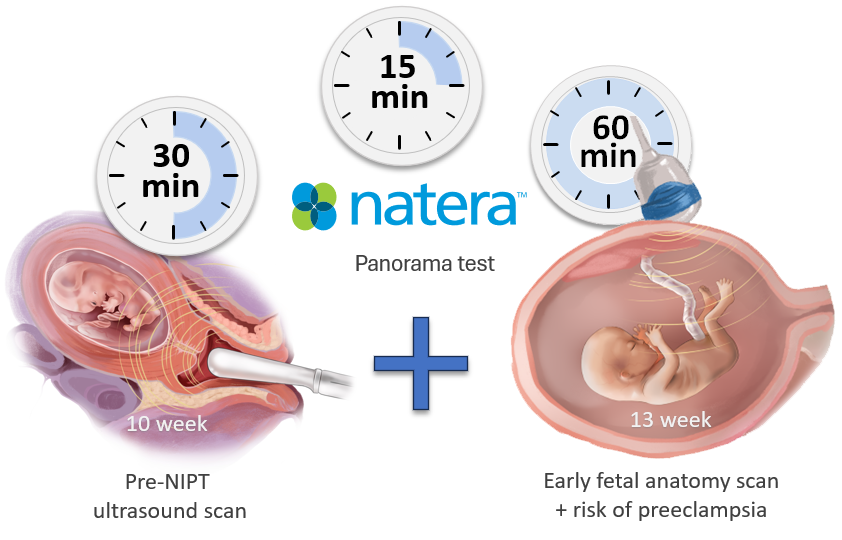Panorama test in case of twins

The Panorama test can be performed in the case of twins. Furthermore, with the Panorama test, it is possible to determine whether they are monozygotic or dizygotic twins and assess the gender of both children.
The incidence of twins in Estonia is about 2%. Dizygous twins are more common (70%), while monozygous twins are less common (30% of cases).
Dizygous twins always have two placentas and no common circulation. In the case of monozygotic twins, the number of placentas depends on when the blastocyst has split. If the split occurs before the 3rd day after conception, the twins will have two placentas and amniotic sacs. If the blastocyst is divided between the 3rd and 9th days, the twins have one placenta and two amniotic sacs. When separating the 9th and 12th days, the twins share one placenta and one amniotic sac. When the blastocyst divides after day 12, Siamese twins will form.
Pregnancy complications for twins do not depend on whether they are mono- or dizygotic twins but on whether they have one or two placentas. In the case of a single placenta, anastomoses are always present between the blood circuits of the fetuses. This can create a situation where blood moves from one fetal circulation to the other, and a twin-to-twin transfusion syndrome occurs, often resulting in the death of both fetuses.

Twin-to-twin transfusion syndrome
In addition to the twin-to-twin transfusion syndrome, twins with one placenta also have a higher incidence of miscarriage, intrauterine growth retardation, developmental defects, premature birth, and perinatal mortality.
By ultrasound examination of the placentas, it is possible to distinguish monozygotic twins from dizygous twins. At the same time, there are situations when it is difficult to assess whether the placentas have grown together or if there is indeed a single placenta during the ultrasound. According to literature, in 19% of cases, the number of placentas is incorrectly estimated by ultrasound examination. When evaluating fetal DNA, the Panorama test provides no errors in distinguishing twins, as monozygotic twins have identical chromosomes, while dizygotic twins' chromosomes differ. Combining the Panorama test with the OSCAR test, twins with one placenta are likely to be distinguished from twins with different placentas.
The discovery of single-placental twins is essential because they have higher prenatal risks, and their prenatal tracking differs from that of dizygotic twins.
The Panorama test makes it possible to assess the chromosomal risk separately for both twins.
- Trisomy 21, also known as Down syndrome
- Trisomy 18, also known as Edwards syndrome
- Trisomy 13, also known as Patau syndrome
The sensitivity and specificity of the Panorama test in detecting these syndromes is over 99% in twins.
The Panorama test makes it possible to find out the sex of both twins.
With an ultrasound examination, it is possible to determine the sex of the fetuses from the 11th to the 13th week of pregnancy by assessing the angle of the genital tubule with the spine. However, this method's error margin is close to 10%. The sensitivity of the Panorama test in determining the sex of the fetus, on the other hand, is over 99%.
The Panorama test cannot be performed on twins in the following cases:
- If the pregnancy has lasted less than 9 weeks,
- If a developmental defect has been detected in the fetus by ultrasound examination or if the NT > 3.0 mm,
- In the case of a twin pregnancy, when the mother has become pregnant with the help of a donor egg,
- In the case of a twin pregnancy, when one of the fetuses has died,
- In the case of triplets,
- If the mother has a balanced or unbalanced translocation of chromosomes,
- If the mother has undergone a bone marrow transplant or has received treatment with stem cells.
The Panorama test evaluates fetuses for dizygotic twins for chromosome 21, chromosome 18 and chromosome 13 trisomy. In addition, you can find out the gender of both twins. In the case of monozygotic twins, in addition to previous diseases, sex chromosome trisomies (Turner, Klinefelter, Triple X and Jacob's syndrome) and 22q11.2 deletion can be evaluated. For twins, the Panorama test cannot assess diseases in the extended panel of microdeletions.
In the case of twins, combining the Panorama test with an early ultrasound and preeclampsia risk assessment is very important.
As fetal developmental defects are more common in twins, it is essential to perform an early ultrasound examination at the 13th week of pregnancy in these cases so that the woman can terminate the pregnancy at the earliest possible stage of pregnancy in the event of developmental defects that are unsuitable for the life of the fetus.




